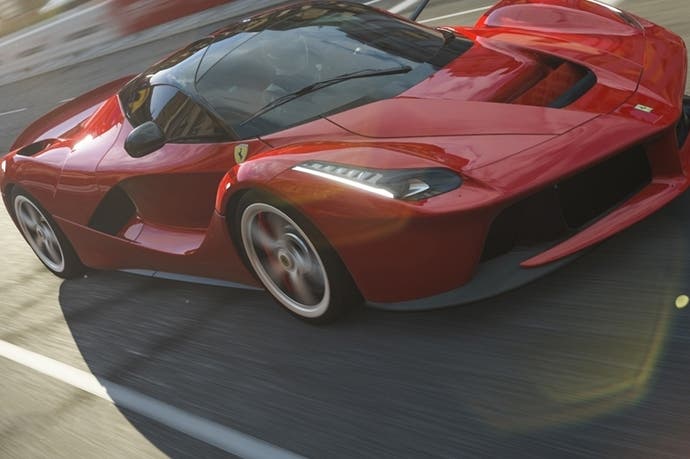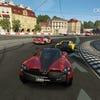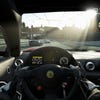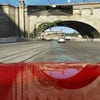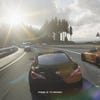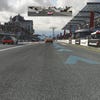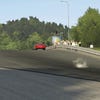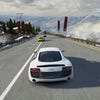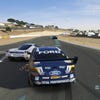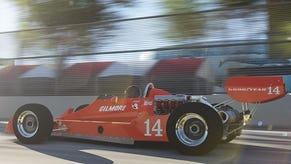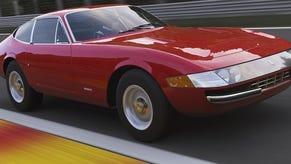Digital Foundry vs. Forza Motorsport 5
How Turn 10 tackled the 1080p60 challenge.
On paper, delivering Forza Motorsport 5 to the 1080p60 standard seems like an immediate, crowd-pleasing move; a massive boost in clarity that sounds aloud the series' first crashing footstep on next-gen turf. But even as an Xbox One launch title, this only scratches the surface of what we expect from a series of this pedigree making a technical leap. Indeed, developer Turn 10 has strived to go the extra mile by making each car in its 200-strong roster worthy of close scrutiny in its Autovista mode, with many of its legacy circuits also remixed to a higher level of precision. Improvements over Forza 4 are many - but there are caveats preventing it being the full-on overhaul we had hoped to see.
Coming from the straight 720p of the previous game, where MSAA was in effect to varying degrees based on the race mode chosen, the impact of the resolution boost for this fifth entry can't be understated. True to its word, we have a 1920x1080 native framebuffer that unleashes impressive draw distances on circuits such as the Bernese Alps - where details on distant mountain peaks have been adapted to higher-grade assets to make the most of the upgrade. The introduction of a new materials-rendering technology also benefits hugely. Matte textured cars such as the Hyundai Coupe 3.8 Track sport grill and meshed details with a high density of fine details, many of which would otherwise appear muddied if seen through a lower resolution window.
But as we've seen in the 900p presentation of a game like Ryse, there's more to producing an appealing end image than heightening the pixel count - though this inarguably goes a long way. Even running at full HD, Forza 5's image suffers for the lack of an effective anti-aliasing method, meaning the game gives us a crisp, but ultimately raw end result. There's evidence of a post-process solution in effect, where light shaded gradients appear between each stair-step of banner lines passing overhead, and the jagged edges are partly obscured by the game's use of depth-of-field and per-object motion blur. However, there's no ignoring the rough-looking foliage and cockpit interior details that go entirely untreated here.
In other words, it's without a doubt an advance over the previous Forza standards in visual fidelity, but not the knockout blow we had expected in this category. Crispness is delivered in abundance, but this - more than any next-gen game in the spotlight at the moment - highlights the importance of image treatment. To check the differences directly for yourself, check out our Forza 4 versus Forza 5 comparison video below, where we switch between the two on matching courses to highlight some of the next-gen differences.
"The new game is without doubt an advance over the previous Forza standards in visual fidelity, but not the knockout blow we had expected."
Right off the bat, it's clear the Prague circuit takes pride of place as Forza 5's showcase tutorial track; a winding brick road that tips the crest of a hill to reveal a magnificent Czech city centre. Compared to the E3 build on Xbox One, which showcased this very same stage, differences in the retail release mostly boil down to the toning down of bloom, resulting in the unusual white flashes also seen on textures in Forza 4. Meanwhile, there's a remixing of geometry, trees, and crowd positions - neither striking us as especially better nor worse for the end effect. On the plus side, the "pop-out" of geometry spotted in rear-view mirrors of the E3 build is less evident for the final release.
Sadly, details like foliage and spectators do appear at odds with the visual standard of the rest of this track; particularly compared the sublime recreation of the McLaren P1 loaned to you at the start. On the one hand, trees appear either grossly pixellated or blurred, and the deficits in anti-aliasing do nothing to help the temporal flicker as the camera pans past. Elsewhere, crowds appear like cardboard cut-outs that, while easily hidden by the blurred pace of a high-speed race, sit unnaturally in the environment when caught up-close in replays. You can see these strings much too easily.
Since the Prague stage isn't an option on Forza 4, we instead look to the Bernese Alps and Indianapolis Speedway tracks for something approaching direct side-by-side comparisons of assets and lighting. The first has us pass through a lakeside village which, while sun-lit from a different angle, shows a clear redesign is in effect for buildings and road-side structures. Similarly, Forza 5's tree assets, as crude as they may be when viewed at 1080p, are still a vast step up from those used on the same stages in Forza 4. The only issue here is that some tracks appear to have been treated to the next-gen brush more than others, with the spectator stand geometry on lower-profile tracks appearing almost identical to the 360 counterparts.
"The next-gen release is a brighter, clearer and more colourful game for the lighting tweaks, but never to a cartoonish extreme."
On the positive side, the plastic sheen of Forza 4's tarmac texturing is gone, and where there's grass we get more authentic stretches of tufts sticking upwards, plus bump-mapped tyre imprints across the dirt patches of the Mazda Freeway. It's a vast improvement on this front, but all presented with what appears to be a trilinear filtering solution. In a nutshell, this pares back the noticeable filtering cascades seen in Forza 4's approach, but courtesy of the resolution bump, a blurring to the floor is still very apparent ahead of a car's front fender in Forza 5. It's a surprise, especially given how undemanding anisotropic filtering is for any modern PC of equivalent spec, and we had hoped it'd be commonplace on any Xbox One racer.
As for lighting, it's impossible to overlook the added light shaft and lens flare effects. These are eye-catching visual hooks when caught at the right turn, but arguably over-used across the limited breadth of tracks available. Otherwise it's all gain coming from previous games; the crush on whites and blacks has disappeared giving us a better-balanced gamma reading, and the blue-ish tint that once overwhelmed Forza 4 is removed to give a more natural colour palette. The next-gen release is a brighter, clearer and more colourful game for the lighting tweaks, but never to a cartoonish extreme.
Much of this has a knock-on-effect with cockpit reflections too, where the front window now mirrors your dashboard and hand motions under the right lighting conditions. One camera view switch away is the bonnet perspective, where all world details are also kept fully intact - even down to the UI elements hovering over AI cars. And as usual for the series, these reflective surfaces operate at half the game's typical refresh when under load, giving us a 30fps update that matches the rear and side-view mirrors.
The halved refresh is distracting when looking close, but it's pleasing to see that the actual on-road action holds up so well in performance stakes - and with v-sync engaged as usual. By all tests, Forza 5 runs at a flawlessly solid 60fps during 16 player races. It's a respectable feat given the resolution boost and more ambitious geometry of the Prague stage, and one which sets a precedent for future racing sims in the new console generation.
"In review, Forza Motorsport 5's graphical finish can perhaps be seen as a stepping stone towards a final product that's yet to arrive; an impressive - if a little rough - work in progress."
Forza Motorsport 5: the Digital Foundry verdict
On balance, Turn 10's first effort on Xbox One is impressive for what it sets out to achieve in its 1080p60 presentation, but the raised resolution proves to be something of a Pandora's Box. As ever, the studio's exceptional car detailing steals the show in its authenticity, now bolstered by the materials texturing that sits well with the increased pixel-count. However, it's around this that Forza 5's shortcomings become apparent; now we see the lacklustre texture filtering, the pixellated foliage, and even the cut-out spectator sprite-work that line the road-sides. The game's improved lighting effects and motion blur go some way to obscure such issues during the core racing experience, but in tandem with the halved track and car count, it does seem to suggest a developer pressed to release an end product to a brutal launch window schedule.
It's also disappointing that, despite the supreme full HD presentation, Forza 5 offers anti-aliasing that delivers little to no effect on foliage or cars. Stair-stepping can be rough in spots, especially in cockpit view, and given the processing muscle-power needed to push out this resolution, it makes for a surprising contrast with a more thoroughly treated - if performance limited - 900p game like Ryse.
With that being said, much of this only considers the surface experience, and we're pleased to find Forza 5's handling model continues to impress in its next-gen form. By building on well-forged relationships with like the likes of Pirelli, from whom test data continues to be sourced and entered into the game engine, Turn 10's work continues to improve a simulation that few besides Polyphony Digital are ready to match in the console scene. At its core, the racing mechanics remain fun and satisfying with a controller in hand, even if the gloss over the top can underwhelm.
In review, while the bedrock racing experience is as solid as ever, this can be seen as a stepping stone towards a final product that has yet to arrive; a work in progress if you like. Even compared to the build seen at E3 just a few months ago, differences in bloom, optimised LOD streaming and the remixing of each circuit's surrounding décor are apparent. But in its current form, although Forza 5 falls short in terms of overall polish, it sets a precedent for next-gen racing simulations by virtue of simply planting the flag in the soil first.
